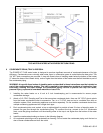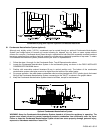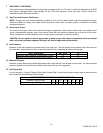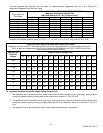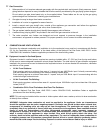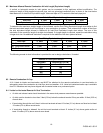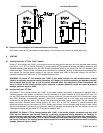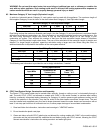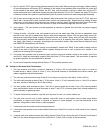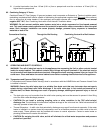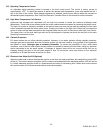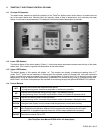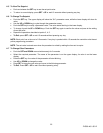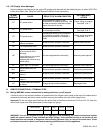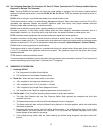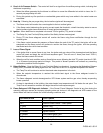21
PV500-44U 06/12
4. Dry-fit a solid 6” CPVC pipe into the female economizer flue outlet. Remove the pipe and apply a liberal coating
of room temperature vulcanizing (RTV) adhesive to the inside of the stainless steel economizer flue outlet and
to the outside of the plastic pipe. Before the RTV sets, slide the plastic coupling or elbow back into the RTV
coated economizer flue outlet while rotating the pipe approximately 1/8 of a turn. Inspect and apply RTV to the
inside and outside of the plastic to stainless steel joints to provide a continuous water and gas tight assembly.
5. Drill a pilot hole through the top of the stainless steel economizer flue outlet and into the 6” CPVC pipe and
attach with a sheet metal screw (stainless steel screws are recommended). Repeat this step adding a sheet
metal screw to each side of this economizer flue outlet to positively attach the pipe to the flue outlet. Do not drill
or use a screw in the bottom of the flue connector or pipe, as condensate might drip from this point.
6. Vent support – The vent system must be supported at intervals no greater than four feet, to prevent sagging
and distortion.
7. Testing for leaks - All joints in the vent system must be air and water tight. After the vent is assembled, close
the end of the vent with a taped plastic bag or some other temporary closure. With the gas supply turned off,
energize the combustion blower to apply air pressure to the vent system. Spray each joint and vent connection
with commercially available leak detection liquid to confirm no air is escaping from any point. Repair any leaks
and retest. After testing is complete, de-energize the combustion blower, wipe clean the leak detection liquid
and REMOVE the temporary vent closure.
8. The solid CPVC vent pipe (Plastic venting is not allowed for models with “SANI” in the model number) must be
sealed to the wall or roof at the point where it passes through the wall or roof, to prevent rain, insects or flue
products from entering the living space.
9. For proper vent operation and to protect the gas vent from wind and weather, attach to the outdoor end of the
vent the UL listed vent termination supplied with the Power VT Plus water heater. This termination is required
for proper operation and no substitution is allowed.
10. Do not use a barometric damper with the Power VT Plus positive pressure vent.
9.5 Vertical or Horizontal Vent Termination:
1. The vent terminal must have a minimum clearance of 4 feet (1.22 m) horizontally from, and in no case be
located above or below, unless a 4 foot (1.22 m) horizontal distance is maintained from electric meters, gas
meters, regulators and relief equipment.
2. The vent cap must terminate at least 3 feet (0.91 m) above any forced air inlet within 10 feet (3.05 m).
3. The vent shall terminate at least 4 feet (1.22 m) below, 4 feet (1.22 m) horizontally from or 1 foot (0.3 m) above
any door, window or building air inlet to the building.
4. The vent system shall terminate at least 1 foot (0.3 m) above grade and at least 1 foot (0.3m) above possible
snow accumulation levels and shall terminate at least 7 feet (2.13 m) above grade when located adjacent to
public walkways or gathering areas.
5. To avoid a blocked flue condition, keep the vent cap clear of snow, ice, leaves, debris, etc.
6. The vent must not exit over a public walkway, near soffit vents or crawl space vents or other areas where
condensate or vapor could create a nuisance or hazard or cause property or could be detrimental to the
operation of regulators, relief valves or other equipment.
7. A horizontal vent must extend one foot beyond the wall.
8. A horizontal vent terminal must not be installed closer than 3 feet (0.91m) from an inside corner of an L-shaped
structure.
9. A vertical vent must exhaust outside the building at least 3 feet (0.91m) above the point of the exit and at least 2
feet (0.61 m) above the highest point of the roof within a 10-foot (3.05 m) radius of the termination.



